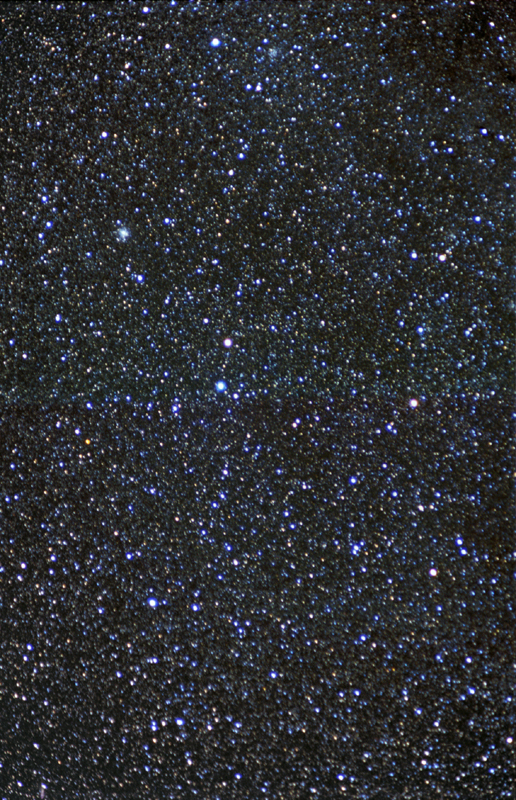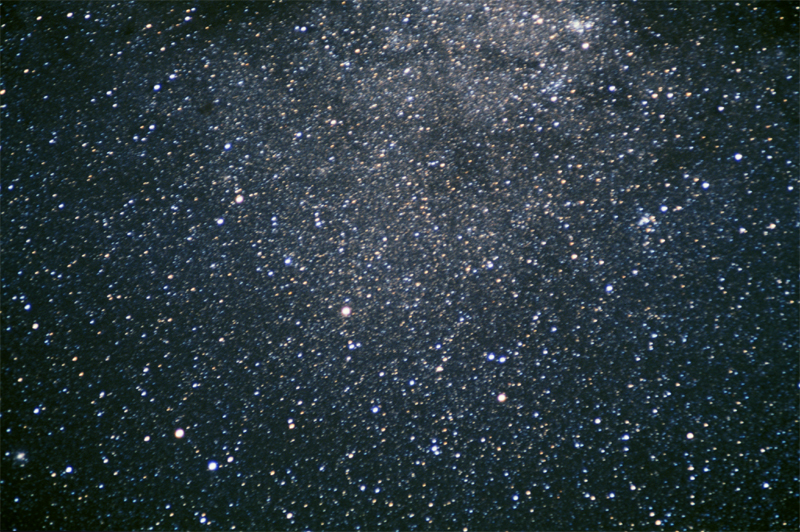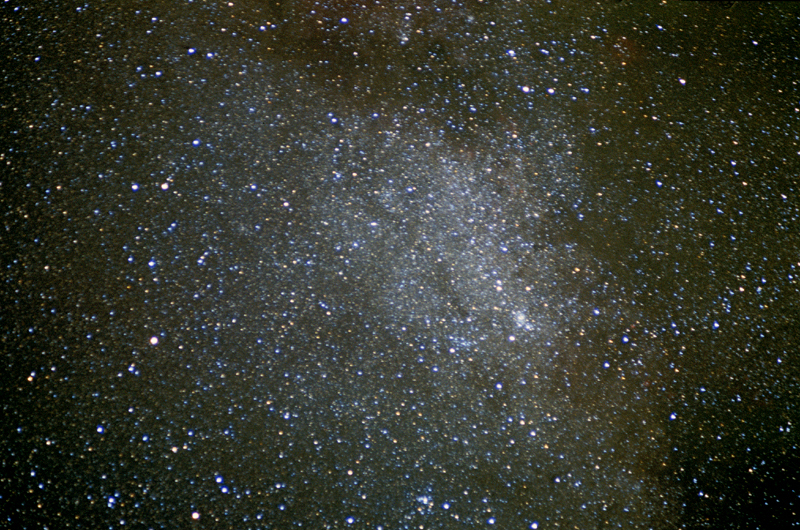
30 minutes exposure, Fuji Superia 200 film. 135mm f/3.5 Tamron lens.

To the south of Scorpius lies the constellation of Ara. Although it contains a rich portion of the Milky Way, and a number of very interesting deep-sky objects, this constellation is relatively unknown to northern observers due to its very low altitude when viewed from the northern hemisphere.
The photograph above shows the central protion of the constellation. Close to the centre of the photograph is a pair of bright stars. These are beta (above) and gamma. Beta is a red giant star about 600 light years away, while gamma is a "B"-type supergiant similar to Rigel, but located more than 1100 light years away. To the right is another red giant, zeta.
To the upper left of beta is the brightest globular cluster in Ara, NGC 6357. With a total magnitude of 5.3, this cluster is easily visible to the naked eye from a dark location. In the telescope it is a beautiful sight. Of all the known globular clusters, only M4 is believed to be closer to the solar system.

Close to the top of the photograph is the bright open cluster NGC 6067, and towards the lower left edge is the very bright globular cluster NGC 6397.
